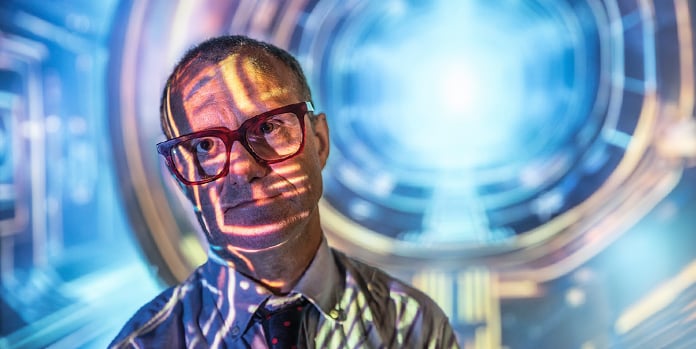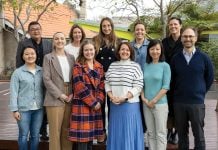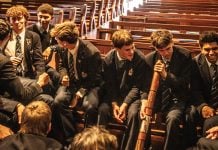Senior School Head of Creative & Performing Arts Dr Matthew Perkins examines the relationship between artistic practice and emerging technologies.
To talk about the intersection of art and technology, we must define what “technology” means in an artistic context. We could perhaps argue that even the humble paintbrush is a kind of artistic technology, but I tend to view technology in art as encompassing tools that have transformed artistic practices more recently such the camera, video and, of course, the computer.
For young people today, escaping the influence of technology is nearly impossible. Whether it’s through communication, capturing moments through photography, or engaging with digital platforms, technology permeates nearly every aspect of their daily lives. It is a natural evolution for students to consider the creative potential of these tools in the art classroom.
Today, nearly every art student has daily access to a laptop and a smartphone, and artificial intelligence (AI) which is no longer just a buzzword but a powerful force reshaping how we do things in the world, is starting to influence art practices.
The intersection of tradition and change
When we look back over the history of art, we can see how each new technology has shaped the creative traditions. In the 1970s, for example, artists began using video as a way to challenge the status of art as an elite, exclusive practice. Today, in a world where digital tools are part of our everyday lives, attempting to keep them out of the art classroom is counterproductive because electronic visual language is part of student’s everyday experience.
Also, new technologies can assist our creative practice without diminishing traditional forms. Those students who find that painting is their passion must of course be supported to pursue excellence in that medium. But when we open our artistic toolbox, we need not ignore all the additional tools that are now available to us, down to the astoundingly powerful computers we carry around in our pockets, our mobile phones.
I believe students need to experience creating works of art using traditional tools, as well as to experience how new technologies can enhance traditional methods or be utilised in their own right. The question for a student then becomes: Where can I draw on the tradition, and where can I use new tools to create thought-provoking contemporary works of art?
How emerging technologies are changing the art landscape
Over the past few years, we have witnessed a significant acceleration in emerging technologies, and this requires us to consider their place in artistic practice. In my classroom, we are already using tools such as 3D printers, ChatGPT and Adobe’s generative AI tool Firefly to ask questions and discover new ideas. These tools can both enhance productivity and be used as idea generators that can offer new perspectives for artists to respond to. That is not to ignore the challenges of AI, which are at the forefront of our discussions.
Again, none of these technologies should diminish the value of traditional skills such as drawing, painting, and printmaking in any way. Students with a particular aptitude or interest will always be encouraged to pursue the aspect of art they love, whether they wish to be a digital artist, a sculptor, or a ceramicist. All these media are simply additions to our artistic toolbox that invite new creative opportunities.
In everything we create, the meaning we convey – what we aim to communicate to the world – is what truly matters. The student’s unique voice is at the heart of their artwork.
For the student-artist, it is crucial that any new tool is used to encourage complexity in thinking, so that the resulting artwork offers multiple readings and messages.
Above all, whether art is something a student decides to pursue long-term, or something they engage with only during their education at school, each classroom experience should reinforce the fact that engagement with art has lifelong value for us all.
About Dr Matthew Perkins
Dr Matthew Perkins is the Senior School Head of Creative & Performing Arts at Melbourne Grammar School. He has been an educator and researcher in screen and digital media for over 25 years. His previous roles include Photomedia Studio Coordinator and Fine Art and Visual Arts Course Coordinator at Monash University.
More recently, he has worked as Learning Technologist, Instructional Designer, Head of Art (Middle Years) and Head of Technologies at Melbourne Girls Grammar School.
Matthew completed his PhD in 2018, specialising in curatorial practices and digital media, and was awarded Best PhD by the Art Association of Australia and New Zealand.



